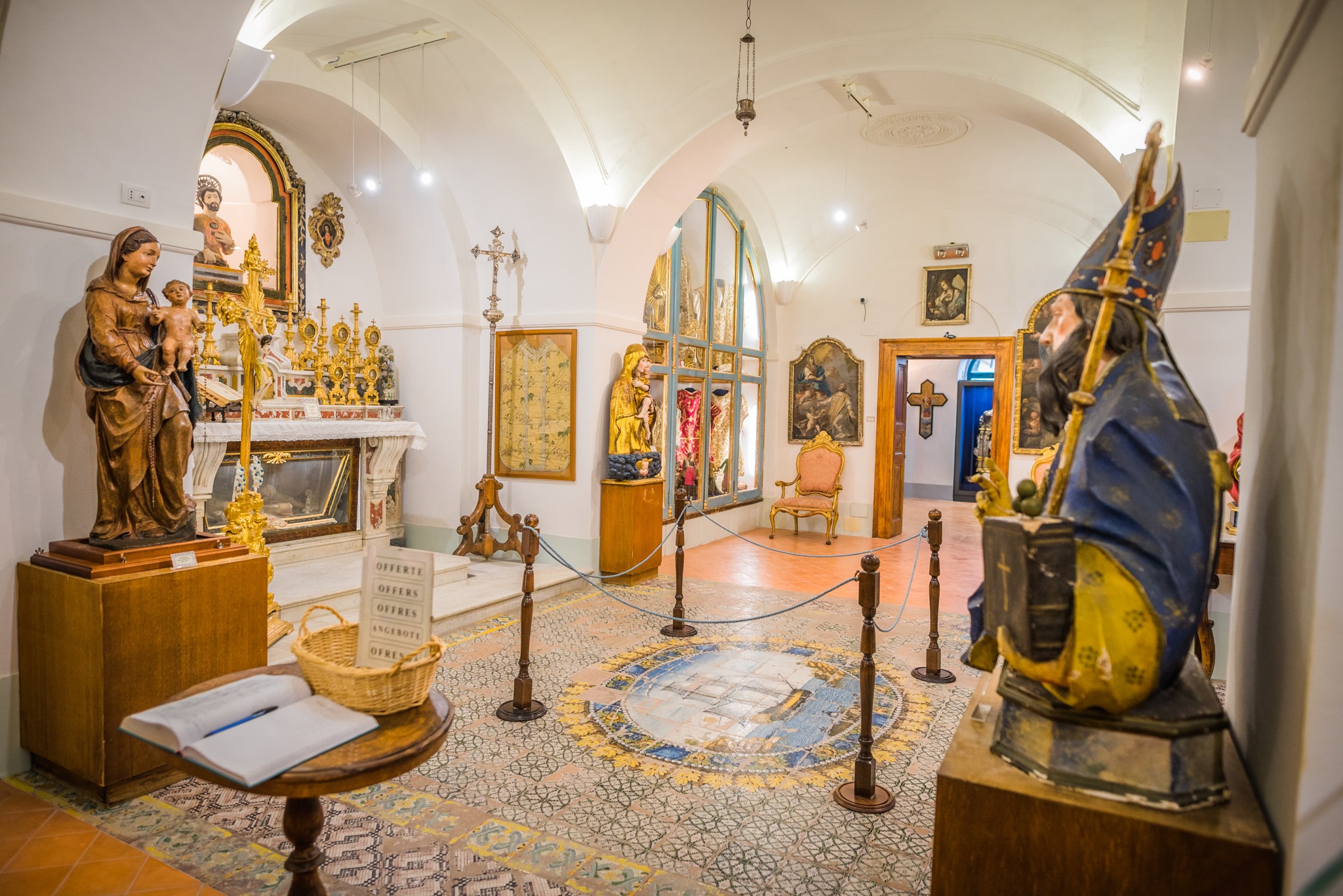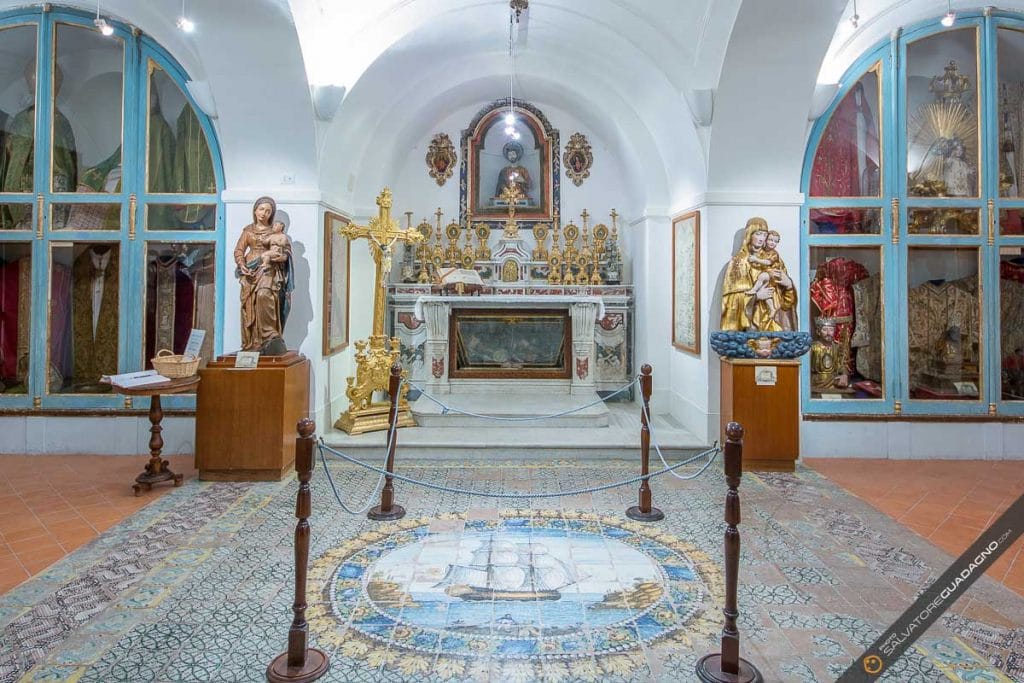The Don Clemente Confalone Museum of Sacred Art in Maiori

Located just over 15 kilometres from our boutique hotel, the Museum of Sacred Art in Maiori is a place where art and faith intertwine in a profound and evocative dialogue. It houses an extraordinary collection of works and is named after Don Clemente Confalone, a leading figure in the Maiori community, who was committed to collecting and preserving this precious artistic and religious heritage that would otherwise have been at risk of being lost.
Housed in the 18th-century crypt of the Collegiate Church of Santa Maria a Mare (where the remains of the martyr Saint Clement, transported from Rome to Maiori in 1780, are preserved), it covers an area of 162 square metres on two levels with an adjoining panoramic garden. It can be accessed through the two main entrances of the collegiate church, following the pedestrian path of the “Scala Santa”, as well as from a direct entrance that opens onto the square at the end of Via Capitolo.
The exhibition layout features themed display cases and individual display stands designed to blend in with the surroundings and the works on display. The exhibition begins with a section dedicated to sculpture, featuring artefacts of great historical and artistic value, including: a magnificent Madonna with Child in Glory and Angels (16th century), in polychrome and gilded carved wood, attributed to a German workshop; the original statue of the Madonna dell’Avvocata; the reliquary bust of Saint Tryphon; and the statues depicting Saint Lucy and Saint Apollonia.
This is followed by an exhibition of other valuable works, including: two illuminated antiphonaries with gold backgrounds (15th century); a reliquary chest depicting the legend of Mattabruna (15th century), in ebony and ivory, from the Embriachi School; three embossed alms plates (15th century), made by German craftsmen; and the alabaster altar frontal, produced in England in the 15th century, depicting the “five joys of the Virgin Mary” (the Annunciation, the Adoration of the Magi, the Resurrection, the Assumption and the Coronation of Mary) between Saints Margaret and James.

Two large display cases, positioned on either side of the altar, house precious liturgical vestments, which represent an important testimony to the craftsmanship involved in the production of sacred ornaments between the 17th and 19th centuries. In the adjacent space, formerly the Chapter Archive Room, numerous sacred vessels and silver furnishings are on display, expressing the refinement and skill of Neapolitan silversmithing between the 18th and 19th centuries. Among these, the most significant pieces are: an altar cross by Gaetano Simioli; two chalices by Biagio Giordano; the reliquary of Saint Lucy attributed to Nicola Palmentiero; and a chalice by Romualdo De Rosa.
The museum is not only a place of conservation, but also an educational space that allows visitors to better understand the religious and artistic history of Maiori and the entire Amalfi Coast. A visit offers the opportunity to appreciate the mastery of the craftsmen and artists who have worked for the churches in the area over the centuries.
Featured photo © Agostino Criscuolo


